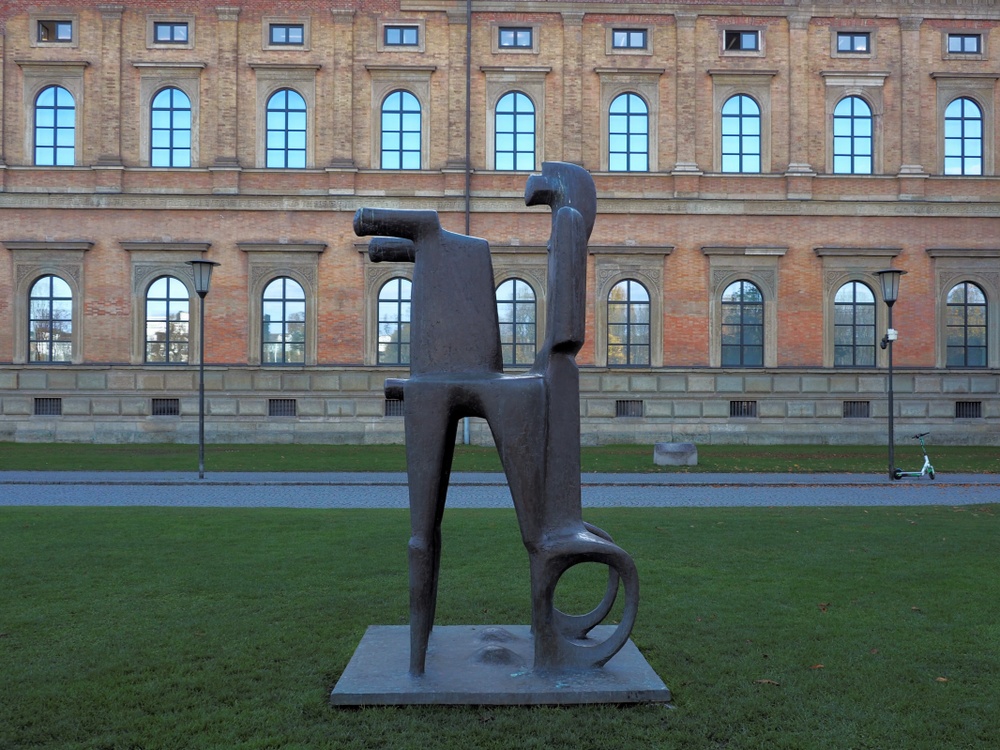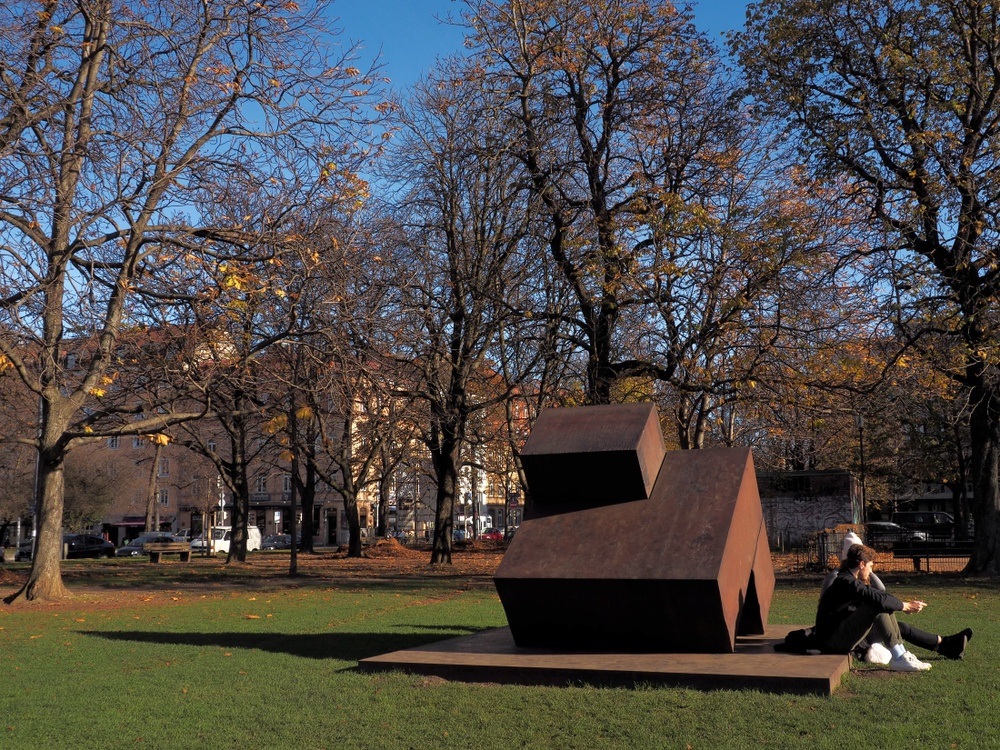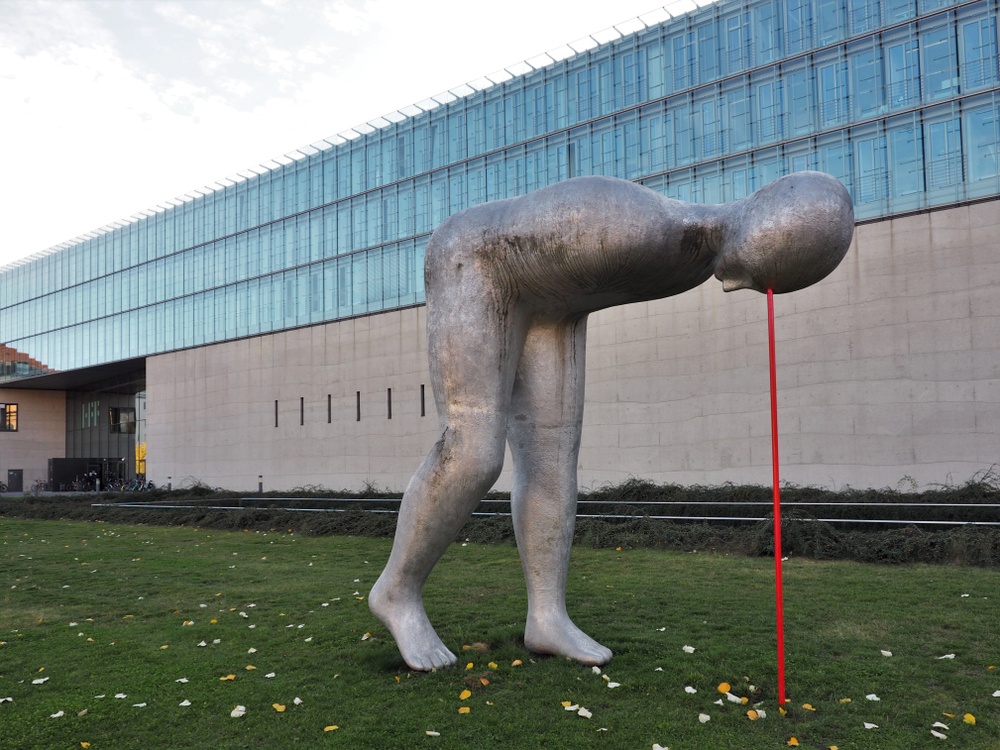Sculpture park of the Pinakotheken
You've probably walked past it many times, lain on the grass or accidentally kicked a soccer against it - but have you ever consciously noticed the sculpture park? The Pinakotheken art area on Barerstrasse is home to numerous sculptures that you can discover on a short walk.
Sculpture vs plastic - the difference
What is the difference between sculpture and plastic? In fact, the two terms are largely used interchangeably. But if you want to be precise (and impress your friends with fun facts), a sculpture is created by application or modeling, while a sculpture is created by carving. If you want to be completely accurate, the works in the Pinakotheken sculpture park are sculptures. But let's not be that precise.
Start your walk at the Alte Pinakothek
We start our walk in front of the Alte Pinakothek. The popular meadow is not only always full of recreational athletesand sun worshippers, but also four sculptures. To the left of the entrance, the Big Biga (2000) by Fritz Koenig is waiting for you. A biga? That's a two-wheeled chariot that was used in ancient Rome for show fights and chariot races. In the royal sculpture, the abstract ancient chariot, the harnessed horses and the human figure have merged into a single unit.
 © Julia Wittmann
© Julia Wittmann
Erich Hauser is represented in the immediate vicinity of the Große Biga with his work Doppelsäule 23/70 from 1970. This is a seven-metre-high steel sculpture whose two columns break open at the top and twist into each other with straight edges.
The two-part monumental sculpture Two-Piece Reclining Figure: Points (1996-70) by Henry Moore forms the center of the meadow. At first glance, the reduced curves appear to be without an object. However, closer inspection reveals two reclining female bodies. Normally, there is a second work on the opposite side of the street, the Large Reclining Figure from 1957, but due to renovation work at the Neue Pinakothek, this work is currently not on display.
 © Julia Wittmann
© Julia Wittmann
In the immediate vicinity is Alf Lechner's sculpture Zueinander (Together) from 1999, which he aims to make tangible by breaking down and rearranging simple geometric shapes. Perhaps you can learn something by looking at his stacked rectangles and squares?
On the way to the back of the Alte Pinakothek, we pass Eduardo Chillida' s monumental iron sculpture Buscando la Luz. It's worth taking a step closer. The work from 1997 consists of three large "funnels" that you can walk through and around. The nice thing about sculptures is that you can look at them from all sides. This means they always look different.
 © Julia Wittmann
© Julia Wittmann
Last stop: Meadow in front of the HFF
Probably the largest figure in the Kunstareal is Present Continuous from 2011 by Henk Visch . It is located between the entrance to the HFF and the entrance to the State Museum of Egyptian Art. The 3.6 meter high steel figure without arms leans forward and looks down. And if you've always wondered why it's doing this, here's the answer: the sculpture's steel, red ray of vision runs from its head through the floor into a hall of the Egyptian Museum below. The figure is looking into the museum, so to speak. An inquiring look into the past never hurts.
At the end of your short art tour through the sculpture park, you can treat yourself to a drink at Minna Thiel or a hot chocolate with ice cream at Ballabeni. With so much art and culture, you've earned it!

